Martial Artists Do Not Need to Prepare to Face an MMA Opponent
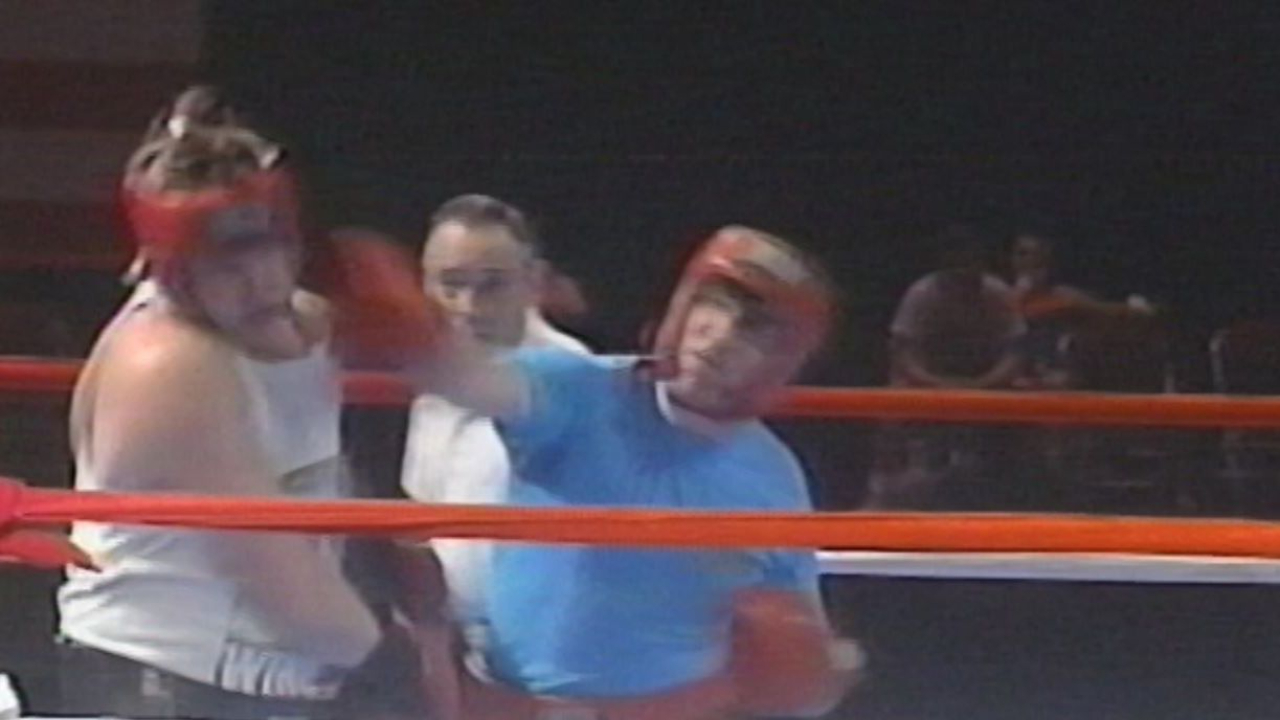
It is a B.S. argument, but it is the current fad in martial arts discussions.
"If you can't take on an MMA fighter, your martial art is useless."
Nonsense.
Being prepared to take on an MMA or a UFC fighter is NOT real-life self-defense.
That's like saying if you are into boxing, you have to be prepared to take on a Golden Gloves competitor.
The truth is, you don't.
Nobody trains all-out. Nobody trains realistically. It is mental masturbation to think that you do.
If you did train all-out, like a "real" fight, you and your partners would not train very long.
Unless you are in a full-contact fight with no rules at all, it is very difficult to defend the way you want to.
If a shooter comes in, I want to knee them in the face and strike down on the back of their neck with my elbow. If someone clinches, I want to bite a hole in their arm.
If anyone practiced realistically, in any martial art, we would all take turns going to the hospital.
We were practicing clinches last week, ...
Teaching My Wife How To Do A Tai Chi Takedown with Split Energy

My wife, Nancy is my videographer. She is usually behind the camera as we record lessons for DVDs and the website.
Yesterday, as we were recording some tuishou instruction about using tai chi "energies" and methods to do takedowns, we pulled her out in front of the camera to learn how to do a takedown using "shoulder" energy.
I enjoy teasing Nancy. She has a great sense of humor. One of the reasons I started in martial arts was because I thought it was fun. I still do, so I often include outtakes and jokes in my DVDs and video for the website.
This is a short video showing Nancy learning a good technique. The Chinese term for the technique is at the end.
A Fighting Strategy for Self-Defense: Receive and Return

There are seven main fighting strategies in my curriculum. I have begun shooting instruction on these strategies for my website (internalfightingarts.com). I also worked on a pdf document for members of the website to download -- a companion to the video lessons.
The Seven Strategies are:
- Receive and Return
- Lateral Return
- Mutual Striking
- Yield and Overcome
- Control the Center
- Join and Unite
- Instant Resolution
The first one, Receive and Return, is especially useful when I work on sparring with Xingyiquan. It is like pushing on a tree branch. The branch will bend as you push, but when you let go, it will whip you when it springs back.
With Receive and Return, you maintain your distance when your opponent attacks. You move back, load the rear leg, then you spring back when his technique misses its target. You can also spring back between his techniques.
Here are two short clips from tournaments showing me using Receive and Return. In the first clip, a young MMA fighter who h...
An Effective Self-Defense Tactic - Flipping the Script
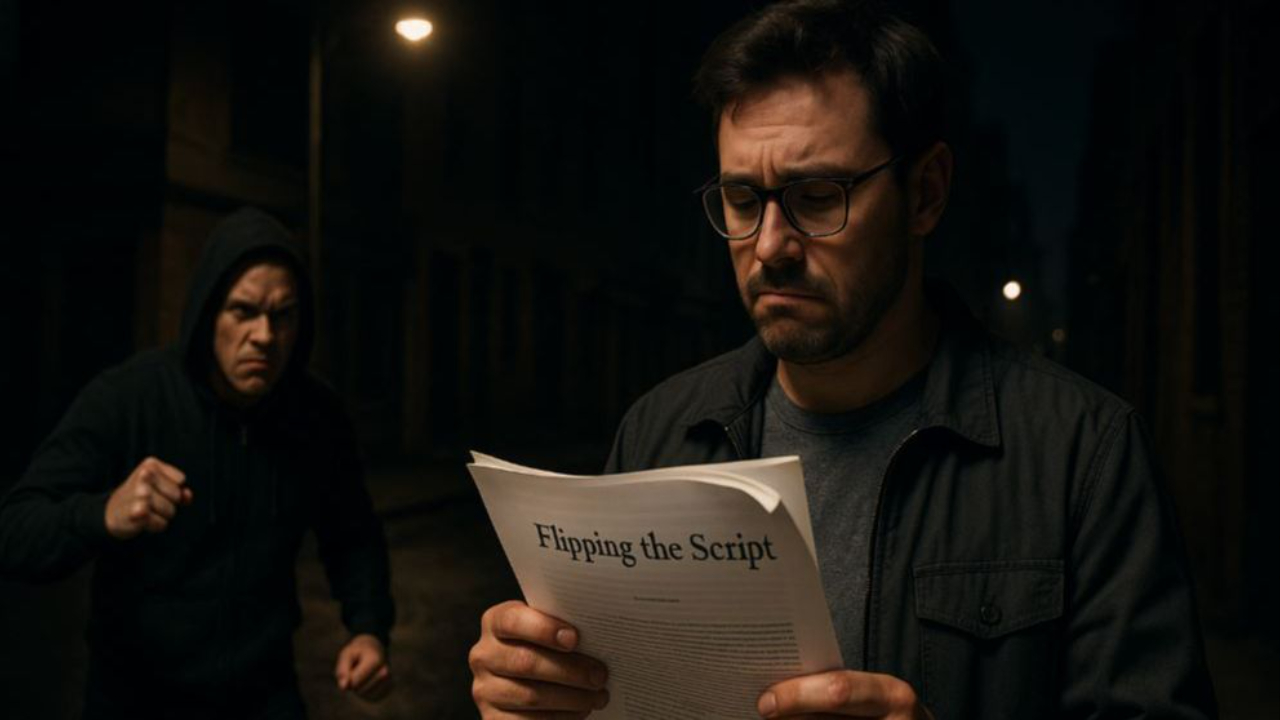
"Hey, what are you looking at?"
Every boy learns to recognize this question. It's one of the first things a bully will say when he chooses you for a target.
It doesn't matter how you answer.
You might say, "I'm not looking at anything."
"What? Are you saying I'm nothing?" the bully will reply.
And then he walks closer. He is ready to fight.
As adults, these types of encounters are not as common, but they do happen. Often, the bully is replaced by someone with more sinister motives -- someone who wants to do us harm.
Dan Djurdjevic is a martial artist from Perth, Australia who has developed the concept of "flipping the script" on someone who is verbally setting up an assault.
You can "flip the script" when you reply to a leading question with something that the potential attacker is not expecting.
For example, he might say, "What are you looking at?"
He is expecting you to be afraid and reply, "Nothing." Then he can continue with his script.
But what if you give him somethi...
10 Quick Ways to Break or Lock an Elbow with Chin-Na Joint Locks
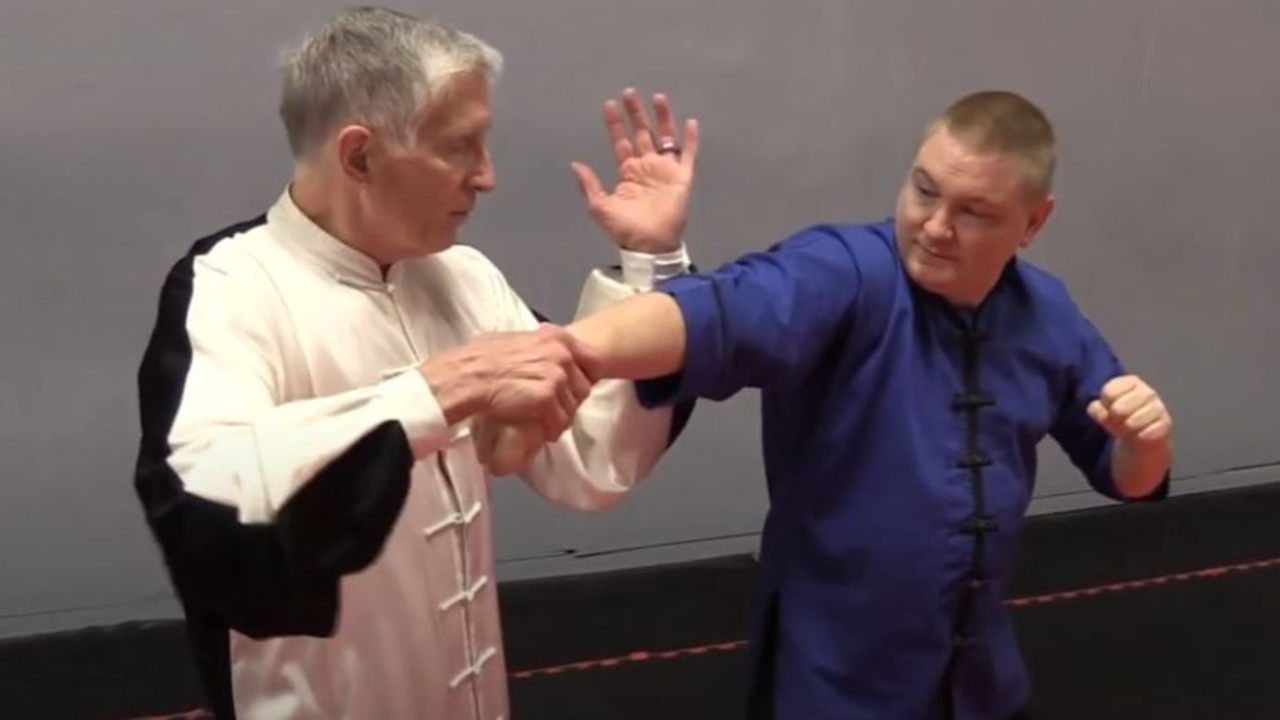
Most traditional martial arts styles give names or numbers to joint-locking techniques. In Chinese chin-na (also spelled qinna), we have names such as "Half Moon," or "Push the Boat Down the Stream." I have always loved these descriptive, poetic names, but sometimes they get in the way.
The best way to learn chin-na is not to memorize names and techniques. The best way is to look at principles -- look at the way joints move -- and then do free-flowing sparring exercises and push hands to practice recognizing opportunities for joint locks when they arise in a fight.
IMPORTANT RULE FOR CHIN-NA:
When someone attacks you, you will NEVER be able to say, "I'm going to get that guy in an Outside Wrist Twist." If that is what you are planning, he will probably knock you out while you are looking for your opportunity.
The best plan is no plan. And that is what practice is for.
You practice with this goal in mind: you want to be able to recognize opportunities for joint locks that arise dur...
Is Your Martial Art Preparing You for Real-Life Self-Defense?
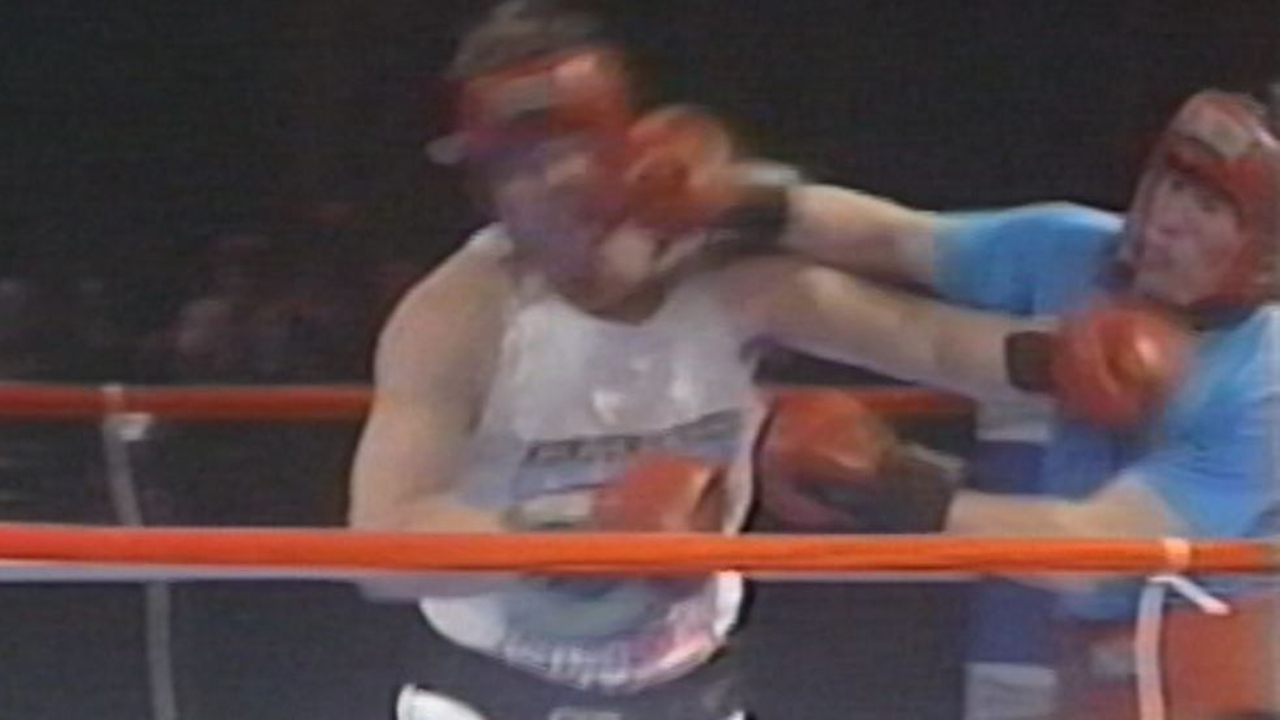
What is real-life self-defense? What is real-life self-defense with the internal arts?
Do I need to step into a ring and go full-contact these days to prove myself?
Do you?
There are suddenly a lot of keyboard warriors out there who seem to think so. Personally, I have mixed feelings about it. I have always enjoyed fighting, but as an adult, I believe it is much better to learn how to fight without getting hurt and without hurting someone else.
When my 15-year-old student was grabbed by a drunk step-father who was preparing to punch him out, my student broke the step-father's elbow with chin-na we practiced in class. That's real-life self-defense.
When my student who is a police officer took a fugitive rapist down with Pi Chuan, a Xingyi technique, he didn't ask himself during the encounter if he was using internal energy just right. He simply took down the man who was considered dangerous.
When three drunk guys at a concert wanted to fight me, I remained centered and managed...
The Power of Bagua Self-Defense - Yin Yang Fish Spinning Elbows

I'm currently shooting video for my membership website and a future DVD on the 8 Main Palms form of Cheng Baguazhang. Today, my student Colin Frye and I were working through the fighting applications of two sections -- Grinding Palm and Turning Body Palm. In both, there is a good deal of spinning.
In Turning Body Palm, there is a move called Yin Yang Fish. It begins with a scooping hook movement and then you spin.
Hidden within the spin is an elbow strike that can do a lot of damage. Here is a short clip showing me demonstrating the elbow strike against a thin board and then a thicker board. Using boards in this way helps you see if you are delivering power in your techniques.
Bagua (also spelled pakua) fighting is powerful. There are many self-defense techniques hidden in Baguazhang forms. One of my favorite things is to study the way the movements translate to fighting applications.
Returning to Center -- the Goal of Self-Defense and Life

We were videotaping a lesson for the instructional website a few days ago -- basic principles of stepping in Hsing-I Chuan.
You begin in San Ti, and whatever you do next, your ultimate goal is to establish balance and return to San Ti.
You can attack, defend, take your opponent's ground (one of the primary objectives in Hsing-I), but as soon as possible, your mission is to return to San Ti.
The same is true in Tai Chi. An opponent attacks -- force comes in. You relax, adapt, neutralize the force, counter, all the while seeking to return to wuji - absolute balance, centered both physically and mentally.
Bagua is the same. As you change and adapt to multiple attackers, you try to maintain your center, capture and control the center of your attackers, but with each movement, your ultimate goal is to return to the centered dragon stance.
Wuji is a state of absolute balance -- of nothingness. From a martial perspective, it's a state of supreme awareness within relaxation. Once you ...
The Circle of Death Practice for Taiji, Xingyi, and Bagua
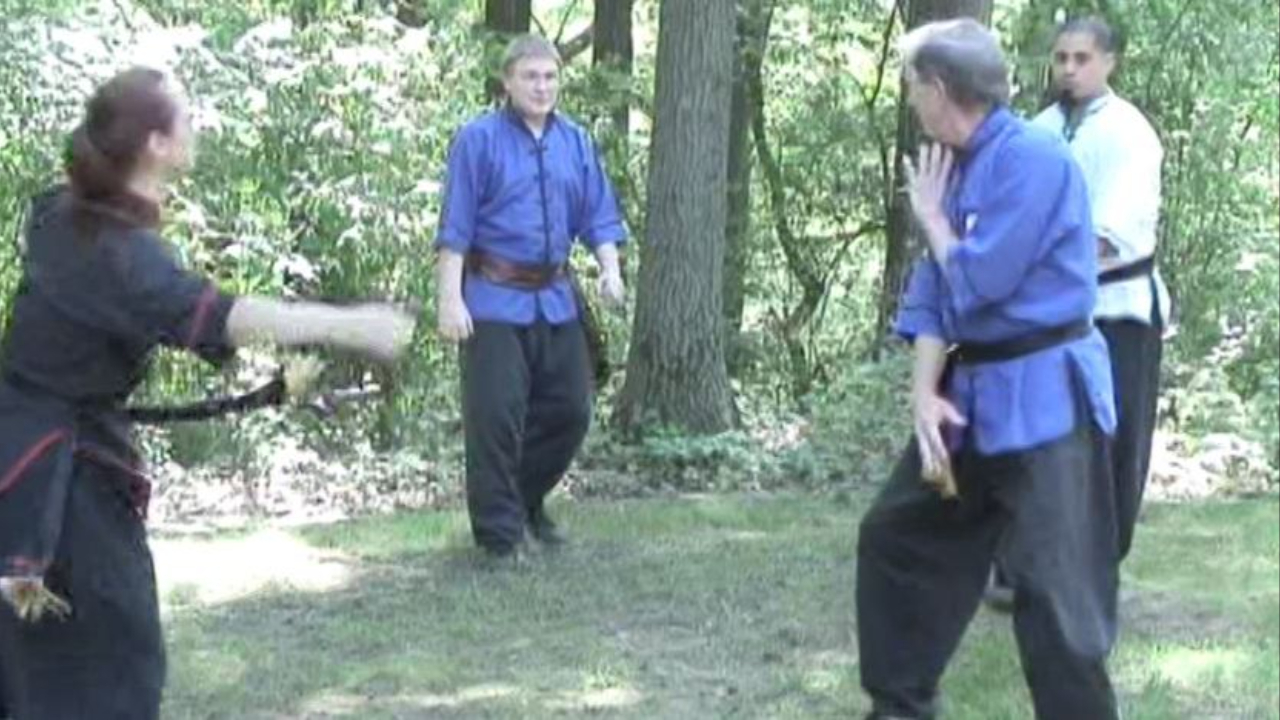
In our practices in the Quad Cities, we enjoy doing the Circle of Death. Here's how it works.
One person gets in the center of the circle and ha so defend as the people on the rim of the
circle attack one-by-one. Sometimes we do it empty hand and the defender must defend with just Hsing-I, just Tai Chi, or just Bagua techniques.
Sometimes we do it with weapons, as we did tonight. We each took turns in the center (including me) and defended with one weapon as others attacked with different weapons, including staffs, broadswords, straight swords, and elk horn knives.
It's always fun, and it gives you a chance to think on your feet and learn how to respond to different attacks.
It's important for the instructor to watch carefully, and if a student doesn't get a reaction right, they should be asked to do it again. The importance of this drill isn't to humiliate the student -- the importance is to have them internalize the actions that it takes, and the techniques required, to defend...
Learning Self-Defense with the Internal Arts

You can practice techniques and forms for decades, but that doesn't mean you're ready to defend yourself if suddenly attacked.
I love to learn fighting applications. I love to look deep into a movement and unlock its potential. There are always fighting applications you don't see -- even in what might appear at first to be just a "transition" from one movement to the next.
Last night, we did some real-world drills, aimed at using two Hsing-I techniques -- peng chuan and pi chuan (crushing fist and splitting palm) against an attack.
Students strapped on their protective gear and paired off. One would throw an attack and I coached (along with black sash Chris Miller) them in an effective way to respond -- a flurry of peng chuan and pi chuan -- rapid fire -- at the stomach, ribs, solar plexus and face.
Students had to throw at least 5 strikes -- using peng and pi -- back to back -- FAST!!
Some students will hesitate after throwing one technique. I pushed them to respond faster and wi...
